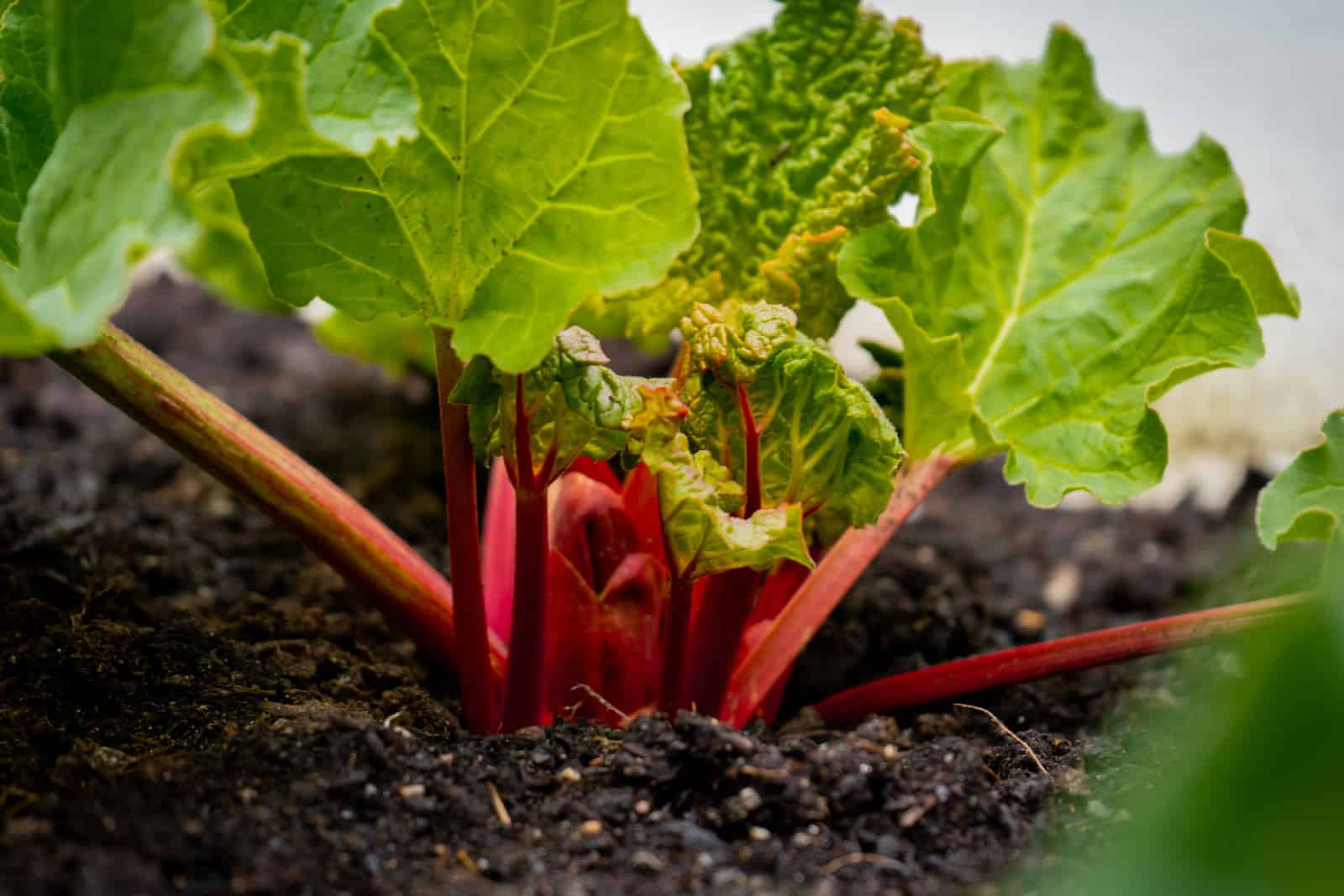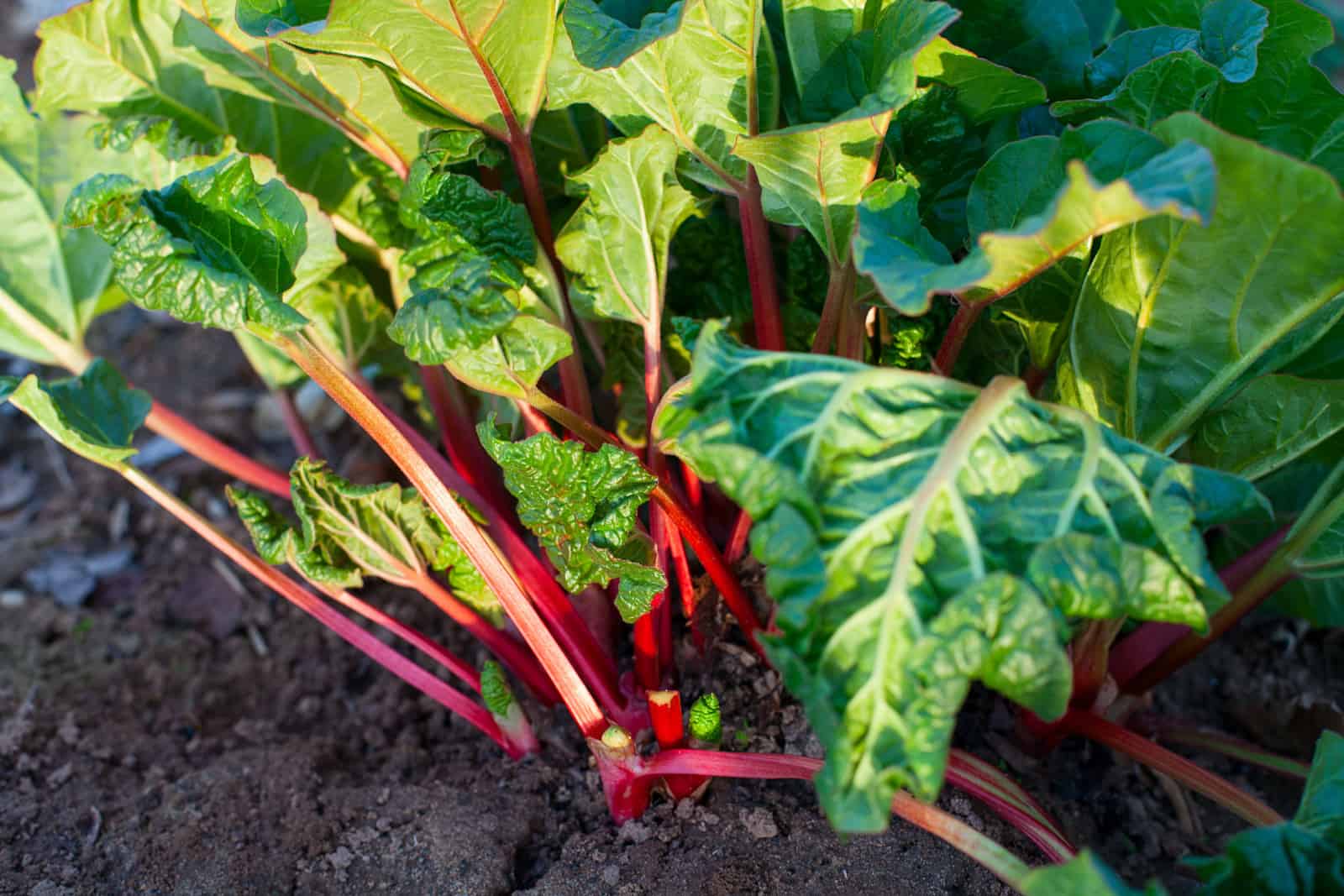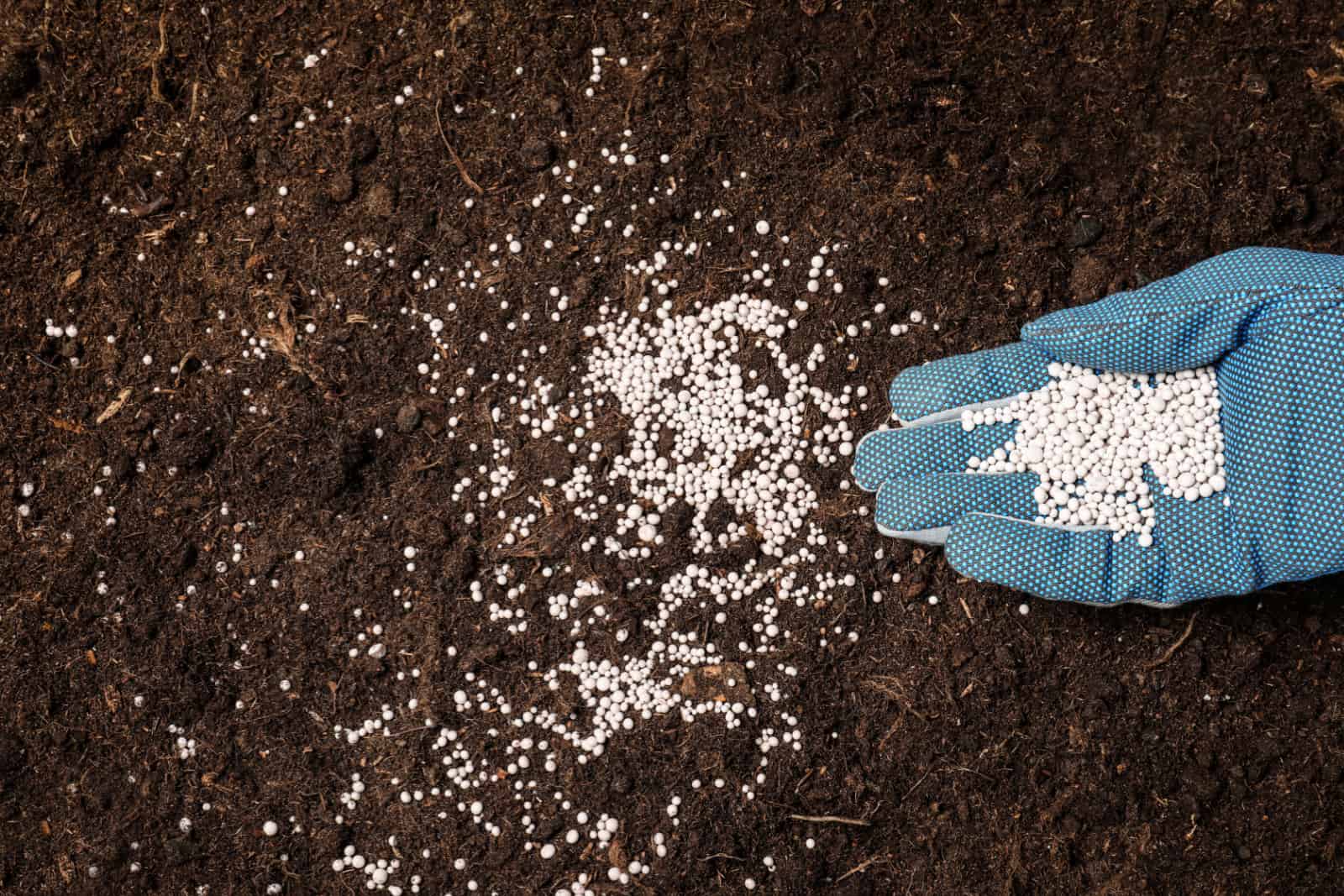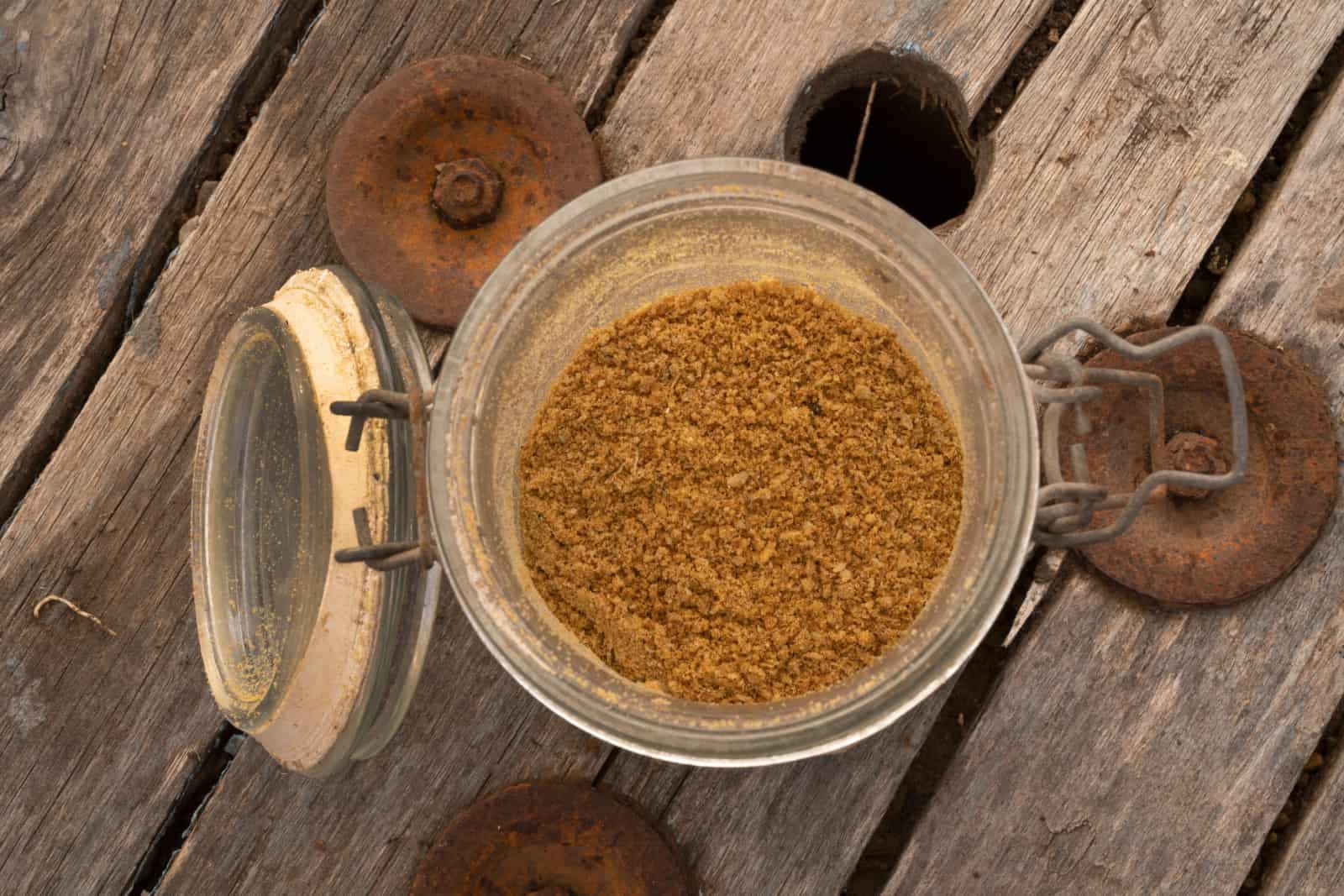Positive Bloom is an Amazon Associate and we earn from qualifying purchases through these links at no extra cost to you.
If you’re looking for a way to maximize your rhubarb harvest, the easiest method for getting a bountiful yield is selecting the right type of fertilizer.
The hardest thing when it comes to fertilizers is choosing the right one because there are so many options available.
Don’t worry, I’ve got you covered. Let’s take a look at the right type of fertilizer for rhubarb, how often to apply it, and if there are any organic alternatives.
What’s The Best Fertilizer For Rhubarb Plants?
This veggie definitely likes to eat! Nutrients from fertilizer will ensure healthy growth and encourage your rhubarb to produce more delicious stalks.
Your rhubarb will benefit most if fed with 10-10-10 fertilizer in early spring and late fall.
This is a long-lasting veggie and if you fertilize it according to a suitable schedule, it’ll keep producing crops for up to 10 years.
I frequently get asked if skipping fertilization affects the growth of this veggie. Well, if your rhubarb lacks essential nutrients, it will start generating flowering stalks. There will be no new growth in this case because all the energy goes to seed production.
Luckily, you can avoid this if you cut off the flowers with a sharp pair of scissors (I simply add them to my compost pile). This way, you’ll help your rhubarb focus its energy on producing new growth.
These leafy veggies do best if fed annually. There’s no need to fertilize your rhubarb in the first year of growth; the initial feeding should be before the second growing season.
Why And How To Use 10-10-10 Fertilizer
The numbers on fertilizer labels frequently confuse beginner growers. The numbers actually represent the NPK ratio in the fertilizer, i.e., how much nitrogen, phosphorus, and potassium it contains.
These minerals are vital for rhubarb growth and the growth of plants in general. 10-10-10 fertilizer contains 10% of each of these nutrients, and the remaining 70% includes other nutrients that play a role in plant development.
When purchasing this fertilizer, I recommend the slow-release granular type. It will release the nutrients gradually and is pretty easy to apply.
Simply take half a cup of 10-10-10 granules and sprinkle them around the base of your rhubarb plant.
There is one essential thing to consider when fertilizing your rhubarb, which is to never apply granules or any other fertilizer type on the crown or stem of the plant because it can burn them.
Additionally, any fertilizer residue on the edible parts of the plant can cause health issues if ingested.
3 Great Options For 10-10-10 Fertilizer
There are many fertilizers with this ratio available on the market, but here are my top 3 picks:
1. Southern Ag All Purpose Granular Fertilizer 10-10-10: This high-quality fertilizer contains the perfect amount of nutrients for your rhubarb. You can also use it for other veggies or even certain flowers with similar nutrient requirements.
2. Lilly Miller All Purpose Planting And Growing Food 10-10-10: This slow-release fertilizer will make your gardening experience way easier. The NPK ratio is perfect and the formula acts fast, which means you’ll have a bountiful rhubarb harvest in no time!
3. Triple 10 All Purpose Liquid Fertilizer 10-10-10 with Amino Acids (5.5%) & Seaweed Extract: This is a liquid 10-10-10 for if you prefer pouring over sprinkling. It comes with an easy measure, so simply dilute it according to the instructions on the package.
What Are The Drawbacks Of 10-10-10 Fertilizer?
10-10-10 fertilizer is great for rhubarb but remember that it’s still a chemical fertilizer.
Fertilizer with a 10-10-10 NPK ratio contains high salt content. The problem with this is that the salt can build up in the soil and limit food and water absorption of the roots.
Pay attention when purchasing fertilizers in general; some may contain harmful chemicals so check everything before buying. Other users can help you with that!
Finally, chemical plant food has a bad environmental effect. It can pollute surrounding water sources and consequently harm aquatic life.
Is There An Organic Fertilizer You Can Use For Rhubarb?
Yes, there are some excellent organic alternatives for your rhubarb, such as:
1. Bone meal: This organic fertilizer contains high concentrations of phosphorus for your rhubarb to develop a strong and healthy root system.
2. Fish emulsion: The best thing about fish emulsion is that it’s a completely organic source of three vital nutrients: nitrogen, phosphorus, and potassium. You can use it in liquid form or dilute it in water if you want to use it as a foliar spray.
3. Blood meal: It may sound sickening, but dried animal blood is an excellent source of nitrogen for your rhubarb. Pay attention if you’re using this type of organic fertilizer because it can burn your rhubarb if applied in high doses.
4. Compost: It seems like compost is a solution to every problem in the garden! It contains many nutrients from organic materials and will provide your rhubarb with everything it needs.
5. Manure: This is a great source of all vital nutrients for plants. The only problem with manure is that it can burn plants, so it’s essential to compost or age it well. Some gardeners combine well-rotted manure with superphosphates to boost phosphorus levels in the soil.
So, you have two options when it comes to fertilizer types for rhubarb. You can go with store-bought products with an NPK ratio of 10-10-10. They contain all the vital nutrients for your rhubarb to thrive.
On the other hand, some excellent organic alternatives can also be used. Bone meal, fish emulsion, and other similar organic fertilizers will give your rhubarb all the nutrients it needs.
Feed your rhubarb once a year before the growing season and enjoy the bountiful harvest of delicious stalks!




